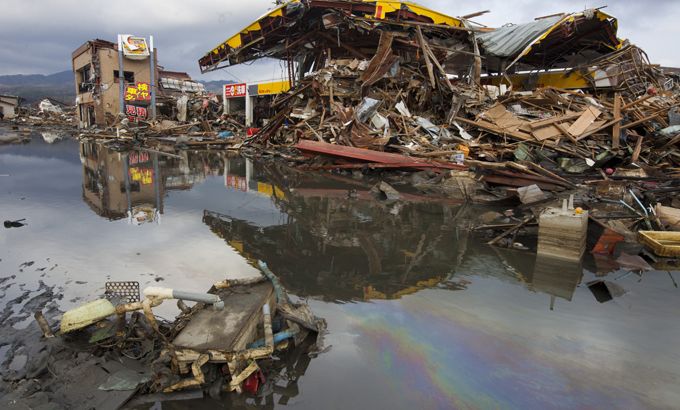Radiation levels soar in Japan sea water
Search for quake and tsunami survivors goes on, as readings show radioactive iodine levels hit 4,385 times legal limit.

The levels of radioactive iodine found in seawater near Japan’s stricken nuclear power plant have reached more than 4,385 times the legal limit, the nuclear safety agency said.
The level was the highest recorded since the crisis at the Fukushima Daiichi plant that was triggered by an earthquake and tsunami on March 11, Nuclear and Industrial Safety Agency Deputy Director-General Hidehiko Nishiyama told a news briefing on Thursday.
Keep reading
list of 4 itemsAfter the Hurricane
World’s coral reefs face global bleaching crisis
Why is Germany maintaining economic ties with China?
He added that this did not present a health risk because nearby residents have already been evacuated from a 20-km zone around the complex that extends out to sea.
The agency, however, said that the government should consider whether to expand the evacuation zone around the earthquake-wrecked Fukushima Daiichi nuclear plant.
The UN nuclear watchdog has suggested that Japan consider widening the zone.
Currently, those within a 20-km (12-mile) radius from the plant have been ordered to leave. The government has encouraged those living in a 20-30 km ring to leave but has not ordered them to do so, advising only that they remain indoors.
Officials said they did not know what caused the radiation level to rise.
“The figures are rising further. We need to find out as quickly as possible the causes and to stop them from rising any higher,” Hidehiko Nishiyama, the agency’s deputy director-general, told a news conference.
But he also played down the danger, saying residents had been evacuated from the area and no fishing was taking place.
“Iodine 131 has a half-life of eight days, and even considering its concentration in marine life, it will have deteriorated considerably by the time it reaches people.”
TEPCO president hospitalised
A 9.0-magnitude earthquake and tsunami on March 11 knocked out the cooling systems of the Fukushima plant’s six reactors – sparking explosions and fires and releasing radiation.
The radiation from the plant northeast of the capital, Tokyo, has wafted into the air, contaminating farm produce and drinking water, and has also seeped into the Pacific Ocean.
Tokyo Electric Power Co. (TEPCO), the beleaguered utility company that runs the damaged plant, has been struggling to stabilise the overheated power plant and contain the radiation.
But in yet another crisis to beset the company, officials announced on Wednesday that TEPCO’s president had been hospitalised with high blood pressure.
Masataka Shimizu, 66, was taken to a Tokyo hospital on Tuesday after suffering dizziness, Naoki Tsunoda, a TEPCO spokesman, said.
Meanwhile, TEPCO shares fell 100 yen, the maximum daily limit, to 466 yen ($5.60) on Wednesday – a fall of 18 per cent. The company’s share price has tumbled nearly 80 per cent since the crisis began.
Safety measures
Japan’s trade ministry ordered nuclear power plant operators to immediately start implementing new safety measures on Wednesday in light of the crisis at the Fukushima plant.
The steps, to be completed by the end of April, include preparing backup power in case of loss of power supply, and having fire trucks with hoses ready at all times to intervene and ensure cooling systems for both reactors and pools of used fuel are maintained.
The operators must also update their own operating manuals and train staff based on the revised rules.
Japan was on Wednesday considering plans to drape shattered nuclear reactor buildings with special covers to limit radiation, and pump contaminated water into a tanker anchored offshore.
“Every possibility” was under discussion, cabinet spokesman Yukio Edano said. These included covering three badly damaged outer reactor buildings with special fabric caps and fitting air filters to limit radiation. Another plan was to anchor an empty tanker off reactor two, so that workers can pump several Olympic swimming pools’ worth of highly-radioactive runoff water into its hull, the Asahi Shimbun daily reported, citing unnamed government officials.
Residents within 20km of the Fukushima plant have been evacuated, while those up to 30km away have been urged to leave voluntarily as radiation has made its way into vegetables, raw milk and water.
The nuclear fears have only compounded the humanitarian disaster following the earthquake and tsunami. The death toll from the disaster has risen to 11,000 people, with more than 17,000 still missing.